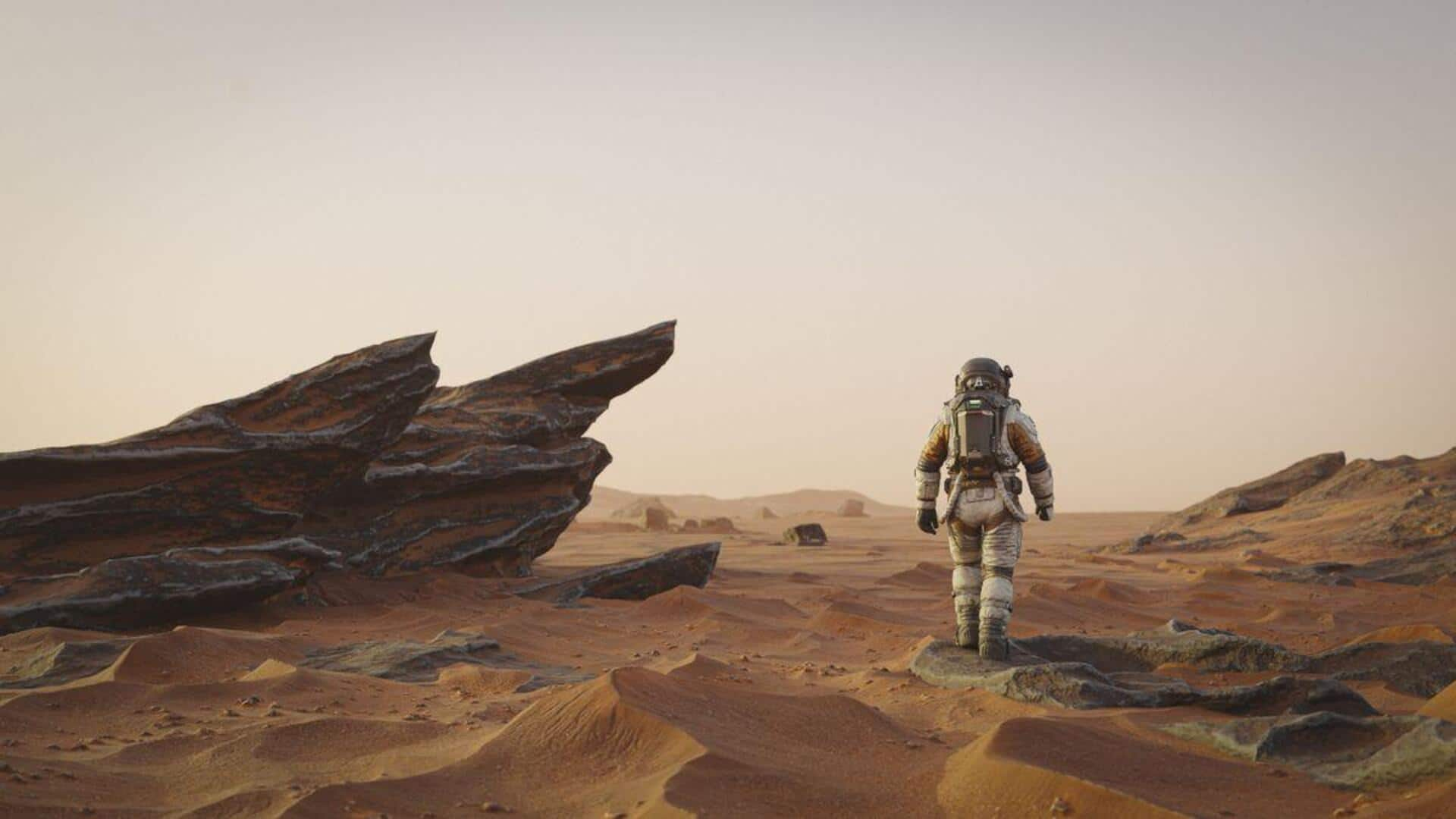
5 challenges NASA must overcome to send humans to Mars
What's the story
NASA has identified five major hazards that could complicate the mission of sending humans to Mars. These challenges range from cosmic radiation and psychological obstacles to the physical toll of long-duration space travel. The US space agency is actively working on strategies to mitigate these risks, underscoring that successful exploration of Mars requires not just ambition but also thorough preparation.
Radiation risk
Cosmic radiation: A threat to astronauts
One of the biggest threats to astronauts on a Mars mission is space radiation. Without Earth's atmosphere, astronauts would be bombarded by harmful cosmic rays and solar radiation. This invisible threat can damage cells, tissues, and organs in humans, resulting in long-term health problems like cancer. NASA is actively looking for effective solutions to keep its crew members safe from this threat.
Mental health
The psychological impact of isolation
The journey to Mars would not just be a physical challenge, but also a mental and emotional one. The extreme distance between Earth and Mars could leave astronauts extremely isolated, unable to communicate with family or friends in real time. NASA is looking at ways to support the mental health of its crew members, particularly focusing on stress management and maintaining a sense of community aboard the spacecraft.
Isolation
Self-sufficiency in deep space
Mars is an unprecedented challenge because of how far it is from Earth (around 225.3 million kilometers away). Unlike missions to the International Space Station (ISS), where help can be provided in hours, Mars-bound astronauts will be alone for months at a time. With communication delays of up to 20 minutes one way, they have to be completely self-sufficient, dealing with everything from medical issues to equipment failures on their own.
Gravity adaptation
Adapting to changing gravity conditions
During their journey, astronauts will experience different gravity conditions: weightlessness in space, one-third of Earth's gravity on Mars, and full gravity when they return home. These changes can have physical effects such as muscle atrophy, bone density loss, and balance problems. NASA is working on training programs and equipment to help astronauts adapt to these different gravitational environments.
Spacecraft habitat
Managing life in a closed environment
Living on a spacecraft for months on end comes with its own challenges, including limited space and resources. Everything required for survival — food, water, oxygen — has to be carefully controlled and recycled. This can pose risks like the spread of bacteria and germs in a confined space. NASA is keen on designing habitats that will keep astronauts safe while tackling these challenges efficiently.